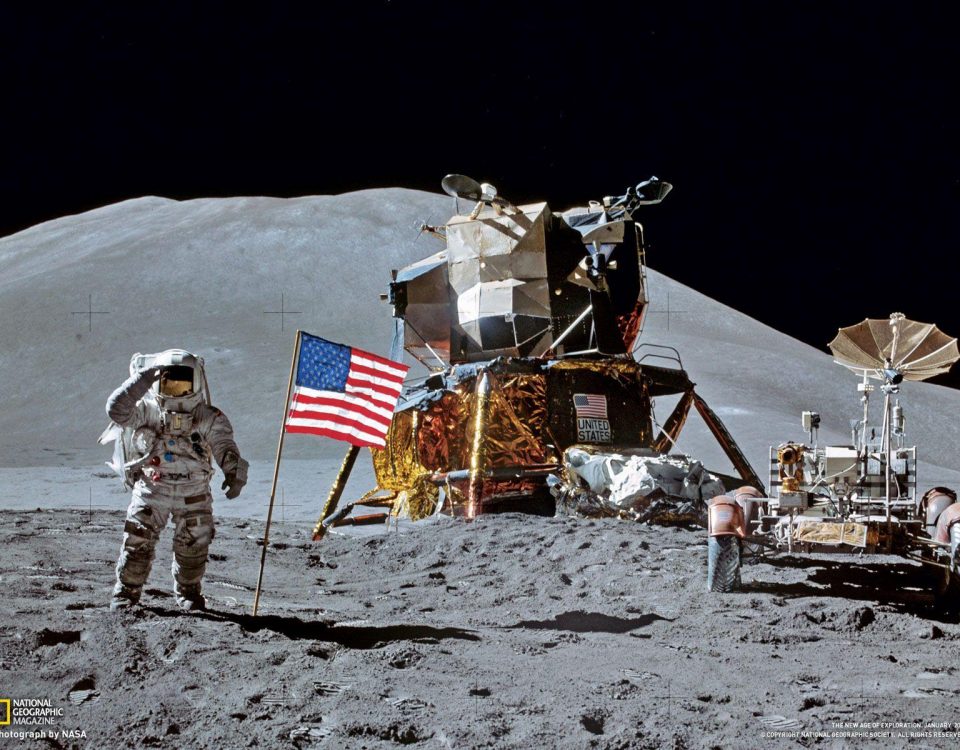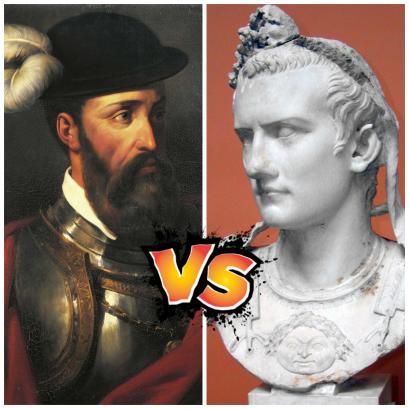
E32.5 – Bracket of Fails: The Final Four (Vote Now on Spotify!)
September 4, 2023
8 Mysterious UFO / UAP Encounters from History (218 BCE – 1945)
September 27, 2023IJN Battleship Yamato: 1937-1945

During the Second World War – while most of Europe and Russia were preoccupied with fighting off Germany and Italy, America and Japan duked it out in the Pacific Theater. At the height of it’s power, the Imperial Japanese Navy was a force to be reckoned with, at that point sporting the third most powerful fleet in human history! The flagship of the Imperial Navy was a hulking leviathan known as Battleship Yamato – the single largest battleship ever constructed (except for her sister ship, the Musashi), and easily one of the beefiest, heaviest, and most fortified hunks of metal to ever float on water, with what might be the most impressive over-the-top arsenal that’s ever been strapped to a boat – and like the Titanic before it, the Yamato was deemed invincible… until it wasn’t.
Yamato (meaning “Great Harmony”, the ancient name for the country itself) was a representation of the pride of the Japanese Empire, and a metaphor for it’s eventual downfall.
THE MEIJI RESTORATION
Before we get there though, let’s go into some backstory first…
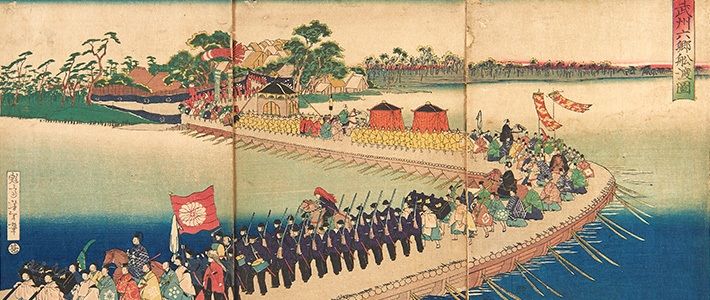
After a long history of being isolated from the rest of the world, Feudal Japan was officially opened to trade in 1853, when an American Commodore, Matthew Perry led his ships into Tokyo Bay. A couple decades later, in 1868, the powers that be decided that Japan needed to westernize overnight. The Meiji Restoration of 1868 was a political revolution that brought about the end of the Tokugawa Shogunate (military rule under the Samurai class) that eventually lead to the industrialization and ‘modernization’ of Japan.
Worried they were falling behind technologically, they threw away their traditional ways in an attempt to ‘keep up with the Joneses’ by industrializing as fast as possible, so they traded in their katanas for muskets. Eventually, Japan set it’s sights on expanding as an imperial power (because that was just the cool thing to do back then), so they decided to try and conquer all of East-Asia! And when Japan decides to do something, it doesn’t mess around.
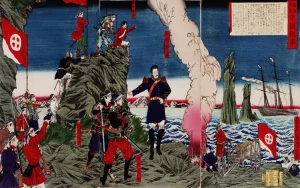
A number of things happened over the next several decades as Japan attempted to prove itself on the world stage: the First Sino-Japanese War (1894-1895) was fought (between Japan and China under the Qing Dynasty) over control of the Korean peninsula, Japan then successfully invaded Taiwan in 1895, they managed to beat back the Russians during the Russo-Japanese War (1904-1905) – also fought over Korea (still technically a sovereign state), and then expanded their territory once again by officially annexing the Korean peninsula in 1910.
During WWI, Japan declared war against Germany and took the opportunity to seize German colonies throughout the South Pacific. As the Japanese Empire expanded, their culture became increasingly conservative, militant, xenophobic, and ultra-nationalist – which is never a great combination.
THE INVASION OF MANCHURIA
Following the end of The First World War (1914-1918), Japan felt snubbed by the rest of the League of Nations (aka the proto-UN), and were concerned with the idea of western powers continuing to exert their influence over others, so once again set out to prove themselves on the world stage by beating them at their own game. One challenge with running and maintaining a massive military force however was that they had limited natural resources on their island as opposed to the other ‘great powers’ of the world. So Japan soon set it’s sights on conquering China.
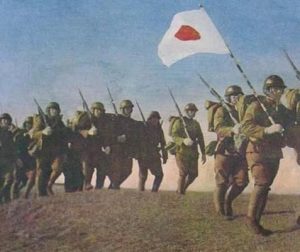
Now China and Japan both have a long history of invading one another going way back to The Mongol Invasion(s) of Japan (1274 / 1281), so Japan decided to start some shit again in 1931 – this time by randomly attacking their neighbor, Manchuria (in what is now modern north/east China). The Invasion of Manchuria led to Japan installing a puppet ruler where they brutally subjugated the populace, and all around committed some pretty horrible atrocities.
Imperial Japan eventually used Manchuria as a staging ground to invade China in 1937 – coincidentally the same year that Hitler and the Nazis invaded Poland, officially sparking the sequel to “The War to End All Wars” –World War II…
THE AXIS POWERS
Following the Invasion of Manchuria in 1931, Japan was kicked out of the League of Nations. Two other countries soon followed suite in quitting the League: Germany in 1933 and Italy in 1937. Meanwhile, Russia joined the League after Germany left in 1934 and was kicked out in 1939 when they invaded Finland. Japan figured that if they made an alliance with other League rejects, they might be able to avoid further drama – they were wrong.
As their Empire continued to expand, Japan was concerned that the United States and Great Britain would interfere with their conquests into the South Pacific. The one thing that Japan had in common with Nazi Germany and Mussolini’s fascist Italy (at the time) was that they were anti-communist, and distrusting of the Anglo-American alliance. So on September 27th, 1940, the Japanese Empire signed the Tripartite Pact with both Nazi Germany and Mussolini’s Italy, forming the Axis powers – which honestly sounds like a supervillain team-up.

It turns out that America was not to happy about Japan taking Germany’s side against their BFF Great Britain. Japan once again tried to secure an alliance in an attempt to avoid further conflicts, by signing the “Soviet-Japanese Neutrality Pact” with the USSR, but that also backfired when Hitler decided to invade Russia… in the winter, because of course they did.
To make matters worse, the United States decided to impose a series of embargos on Japan which would further hinder their resources in their continued expansion. Japan found itself backed into a corner, with 94% of it’s oil supply cut off, and war looking inevitable, they became desperate…
A BIGGER CLASS OF BATTLESHIP
Construction on the Yamato-Class Battleships began in 1937, in secret, as the Japanese Navy prepped for the inevitable war. Inspired by the British Dreadnoughts of the early 20th century, Japan focused on quantity over quality, making bigger and better battleships. The Yamato-Class was by far the biggest and baddest!

To say the Yamato was massive would be an understatement. It’s hull was gigantic, at 863 feet long with a beam of over 127 feet! In fact, this ship was so insanely huge that none of the Japanese shipyards could contain it, canals had to be dredged, and the dry dock had to be deepened. When the immense ship was completed, it displaced 70,000 *TONS* of water! The steel armor alone weighed 22,000 tons! This behemoth of a battleship was propelled by 4 giant turbines, all powered by 12 steam broilers – which guzzled 70 tons of fuel PER HOUR!

Yamato wasn’t just intimidating because of it’s staggering size, it was also outfitted with the largest assortment of artillery ever assembled, including some of the largest cannons ever fitted to a warship. In fact, the ship’s main guns were so ridiculously over-the-top that they could fire High-Explosive and Armor-Piercing Shells 26 miles away, and required reconnaissance planes to help aim them over the horizon!
Weapon Stats:
- Main Batteries: Nine 45-caliber, 18.1-inch, Type 94 guns – each 69 feet long, weighing 147 tons!
- Secondary Battery: Twelve 6.1-inch guns / Twelve 5-inch guns
- Twenty-Four 1-inch Anti-Aircraft Guns (in 1941), later increased to 162 (in 1944)
The Yamato and Musashi were the first of four “Super-Battleships” planned, however the third one was converted into an aircraft carrier at the last minute, and the fourth one was cancelled, because by the start of the war, it turned out that battleships had become practically obsolete with the advent of air craft carriers…
THE PACIFIC THEATER BEGINS
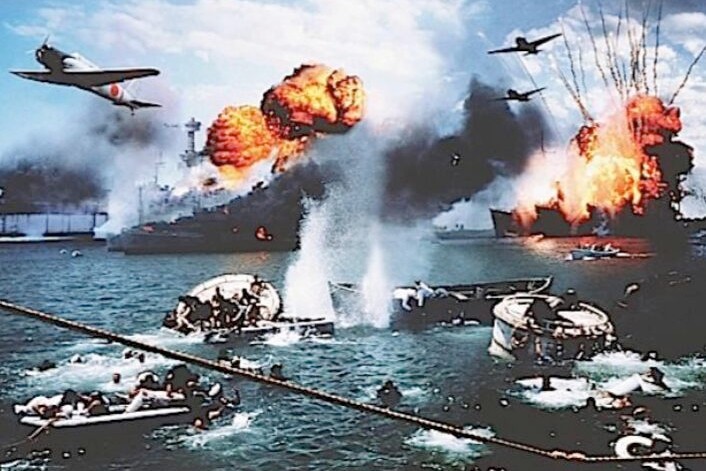
Japan was convinced that it was just a matter of time before the US entered the war, so they decided that their best option was to cripple the American fleet before they could do anything. Admiral Isoroku Yamamoto (a hero of the Battle of Tsushima, during the aforementioned Russo-Japanese War) was the first one to propose the idea of an air raid against the US Pacific fleet at an American Naval base in Hawaii: Pearl Harbor.
This would also prove to be a fatal mistake for the Empire of Japan. Admiral Yamamoto hoped to crush their morale, and discourage the Americans from entering the war… spoilers: it did the opposite.

Japan’s brutal sneak attack on Pearl Harbor shocked the world, in the early morning hours of December 7th, 1941, as 353 Japanese fighter planes were launched from 4 Heavy Carriers at 7:55 AM. Even though the aerial assault was devastating, there were no US aircraft carriers present at the base at the time, and only 4 of the 8 US Battleships were sunk. This would prove to be the beginning of the end for the Japanese Empire, because they had now given America one very big reason to get involved – and this time, it was personal.
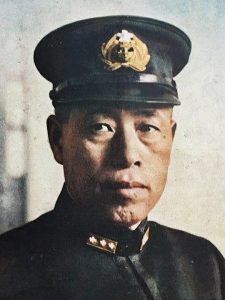
Admiral Isoroku Yamamoto
Admiral Yamamoto wrote in his diary, “I fear all we have done is to awaken a sleeping giant and fill him with a terrible resolve.” To the surprise of almost no one, the Allies declared war against Japan the next day, with President Franklin D. Roosevelt calling it “A Day that Shall Live in Infamy!”
Just four months later, America struck back with an air raid of their own over Tokyo Bay. As the Pacific Theater heated up, Admiral Yamamoto and the Imperial Navy were carefully planning a trap for the Americans at Midway – an atoll in the northern Pacific Ocean that was strategically crucial to the Japanese defensive perimeter…
THE BATTLE OF MIDWAY
From the bridge of the flagship, the (incredibly huge) Battleship Yamato, Admiral Yamamoto coordinated the combined fleet during the Battle of Midway from June 4th to June 7th, 1942. The Japanese invasion force included 4 Heavy Aircraft Carriers, 2 Light Carriers, 2 Sea Plane Carriers, 7 Battleships, 10 Submarines, 15 Cruisers, and 42 Destroyers! It was sure to be a swift victory… until it wasn’t.
Turns out that American code breakers got wind of their scheme and were ready for them: a rag-tag group of Navy pilot underdogs aboard 3 aircraft carriers, backed by a small band of cruisers and destroyers, along with a whopping total of 360 planes ready for combat!
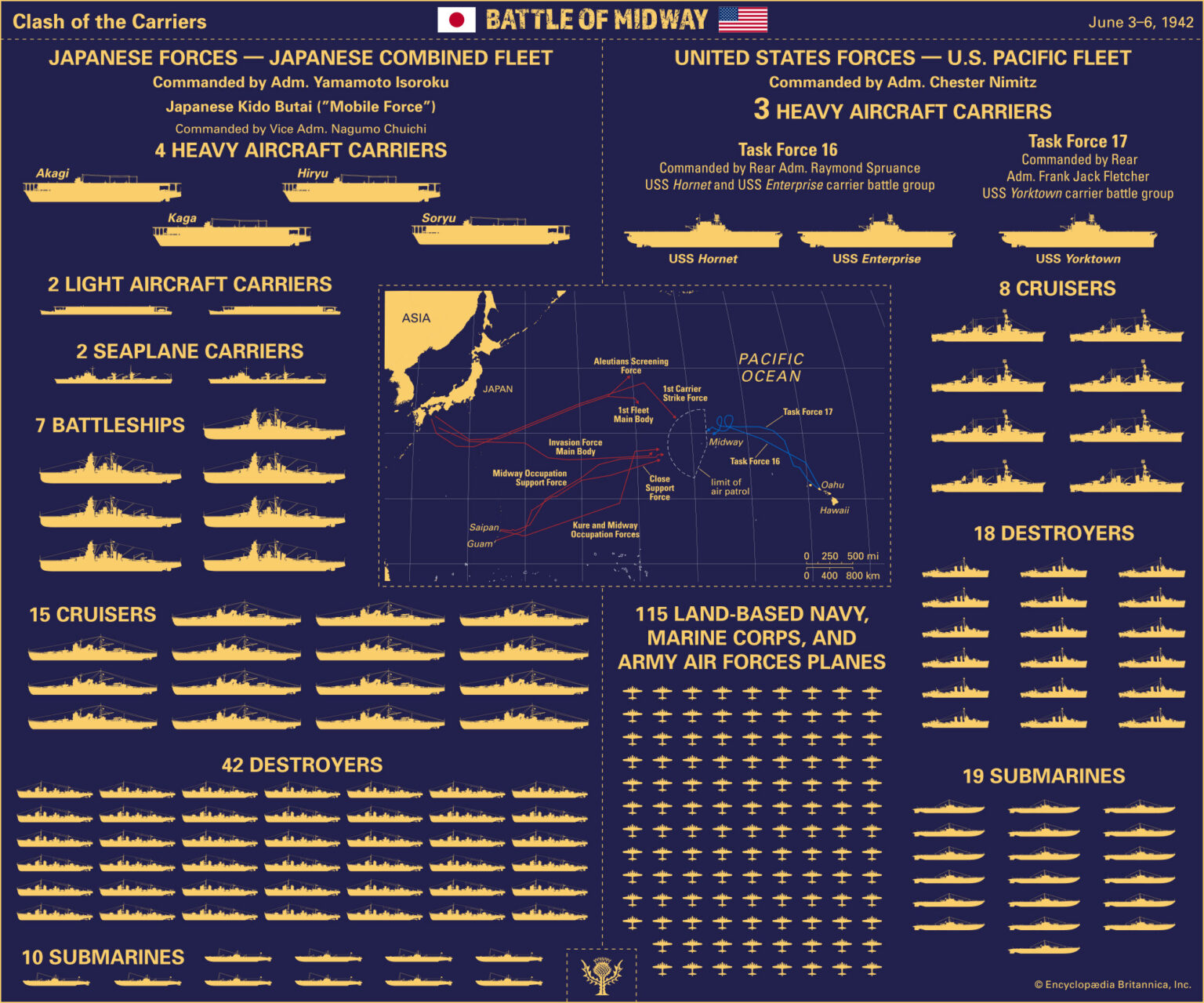
The US Aircraft Carriers, USS Enterprise and USS Hornet were joined by the battle-damaged USS Yorktown that had barely survived the Battle of Coral Sea, previously, but was miraculously patched up within 72 hours and was back at it, ready for a rematch!
Although the Imperial Japanese Navy heavily outnumbered the American forces, they had once again underestimated their enemy and suffered severe casualties during the ambush. The four Japanese Fleet Carriers: Akagi, Kaga, Sōryū, and Hiryū were all sunk during the battle, along with the heavy cruiser, Mikuma, and the loss of 332 aircraft! Midway would turn out to be even more disastrous than Pearl Harbor and was a drastic turning point in the Pacific War.
ENTER: YAMATO

Too big to fail? Or too big to float?
Although the Battleship Yamato was the biggest and baddest ship in the Imperial Japanese Navy (not to mention all of history), it had yet to see any firsthand combat, and was instead used to ferry around the higher ups or supplies, and remained relatively inactive for much of the war. As a result, it soon earned the nickname “Hotel Yamato”. The commanders were seemingly saving these Yamato-class Battleships as an “ace in the hole”, but many of the lower decks Japanese seamen had a saying, “The world’s three most useless things are China’s Great Wall, the Egyptian Pyramids, and Battleship Yamato.”
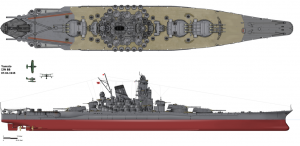
During a routine transport mission on August 28th, 1942, the Yamato had it’s first official engagement – with a random American submarine patrolling the area: the USS Flying Fish. The US sub spotted the bulky battleship and fired four torpedoes at the behemoth, somehow missing it entirely. On December 25th, 1943, Yamato was attacked by yet another submarine, the USS Skate. This time, one of the torpedoes tore into the starboard side of the hulking leviathan, exposing a massive flaw in it’s design as it took on 3,000 tons of water. The Yamato limped back to dry dock for repairs that lasted until February 3rd, 1944. The ship was dry docked *again* a few weeks later, this time for radar and anti-aircraft upgrades, until March 18th, 1944.
Yamato and Musashi were assigned to transport troops during The Battle of the Philippine Sea, where the Japanese lost 3 more aircraft carriers 426 planes. American flyboys called it “The Great Marianas Turkey Shoot”. The Yamato’s only contribution was accidentally firing on their own retreating aircraft.
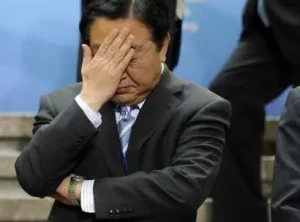
On October 18th, 1944, the Battleship Yamato was selected for a “stealth mission”, painted in black soot to hopefully sneak through the San Bernardino Strait with reinforcements for the Battle of Leyte Gulf. En route, their convoy was easily spotted and attacked, suffering heavily casualties. The following day, at The Battle of the Sibuyan Sea, the Yamato was hit with two armor-piercing bombs, but survived, while it’s sister ship, the Musashi, was finally taken out with 19 torpedoes and 17 bombs.
The writing was on the wall, but the Japanese *still* refused to surrender…
OKINAWA: YAMATO’S LAST STAND
The Allied forces invaded Okinawa on April 1st, 1945, the final step before troops made their way to the Japanese mainland. In response, Admiral Soemu Toyada, the Commander-in-Chief of the Combined Fleet, put one final Hail Mary into effect: “Operation Ten-Go”. This last ditch effort to stop the Allied Invasion was basically a suicide mission. The Battleship Yamato and the rest of their remaining ships (1 cruiser and 8 destroyers), were ordered to sail towards Okinawa, doing everything in their power to slow the Allies. The Yamato was ordered to beach itself and fight till the last man, like samurai.
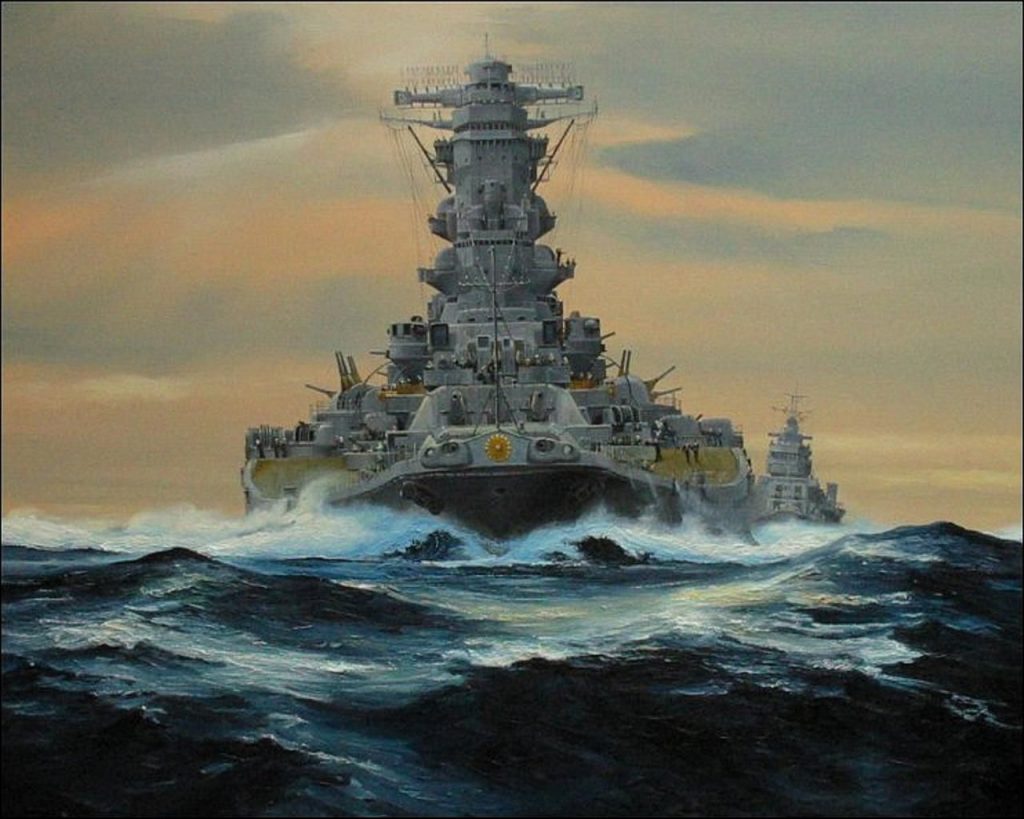
The Final Boss
When told about this plan to uphold the honor and glory of their Navy, Captain Atsushi Ōi reportedly yelled, “This war is of our nation and why should the honor of our ‘surface fleet’ be more respected? Who cares about their glory? Damn fools!” Several other officers also voiced their concerns about the plan, including Vice-Admiral Seiichi Itō, who saw these kamikaze tactics as futile and wasteful. Regardless, the officers eventually conceded and carried out their orders.

On April 7th, 1945, the Yamato and it’s fleet engaged a volley of US aircraft, around noon. F4U Corsairs, F6F Hellcats, SB2C Helldivers, and Avenger Torpedo Bombers started making their attack runs against the Japanese battle group. Determined to go out in a blaze of glory, the Yamato opened fire with it’s main batteries as the ship began taking evasive maneuvers. The massive 460mm guns fired San Shiki anti-aircraft shells, along with the ship’s 150 anti-aircraft turrets, creating “a storm of fire”.

The American pilots soon realized that the use of colored gunfire meant that the Yamato’s gunners were relying on visual aiming / range, instead of radar, and “were missing with great consistency”. Then came the torpedo hits, that rocked the decks of the steel titan. Despite it’s impressive armaments and absurd arsenal, the monstrous Battleship was no match for the 280 bombers that now swarmed overhead, like King Kong trying to swat at bi-planes from the Empire State Building.
Suddenly, 5 torpedoes slammed into the Yamato’s port side, leaving a gash in the mighty ship’s hull. The ship began to flood. The Rear Admiral, Ariga, desperately ordered the counter-flooding of the starboard engine room and boiler rooms, drowning several hundred of his own men. With only one barely-working engine, the ship slowed to a crawl, leaving her even more vulnerable. Several more torpedoes ripped into the Yamato, and as many as 10 bombs hit their mark on the deck of the once great battleship.
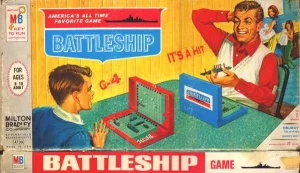
8 torpedoes and 15 bombs later, the Yamato was reduced “to a state of complete confusion,” according to one surviving sailor. “The desolate decks were reduced to shambles, with nothing but cracked and twisted steel plates remaining…big guns were inoperable because of the increasing list, and only a few machine guns were intact…” During the final air assault, around 2pm, a huge torpedo blast severed all communications from the ship’s bridge.
By 2:40, the smoking super structure was listing to it’s side so much, that it’s battle flag was practically touching the water! The humongous 18-inch artillery shells rolled around on deck, with several exploding at random. American pilot, Lieutenant W.E. Delaney witnessed the death throes of the gigantic ship, first hand. After dropping a payload of bombs on the ship, Delaney’s bomber was caught in the blast. He managed to bail out and pull himself aboard a raft just in time to watch the Battleship Yamato crumple beneath the waves in a fiery explosion.

One final blast erupted, as the aft magazines burst from the air pressure within the submerged titan, finishing her off. The resulting mushroom cloud was nearly 4 miles high and could be seen 99 miles away! The Yamato at long last, sank to a watery grave, along with 2,498 sailors and her captain, symbolizing the end of the Japanese Empire…
THE POST-WAR PERIOD
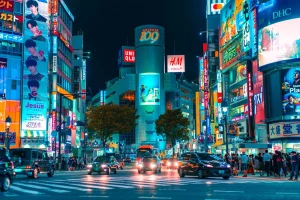
WWII came to a decisive end a few months later, when the United States dropped two atomic bombs on Hiroshima and Nagasaki. Despite the terrible tragedies on both sides, the US helped to rebuild Japan after the war, and the two nations soon became close allies as the world’s attention turned towards the Korean War and the Cold War between the US and the Soviet Union.
By the 1980’s, Japan had bounced back as an economic superpower, this time fueled by a tech boom of electronics, a revolutionized automotive industry, and an ongoing flood of pop culture exports: from Manga and Anime to Godzilla movies and Nintendo! (For more on those last two, check out Podcasters Assemble: Kong-Zilla-Thon, and The Super Switch Club: A Nintendo Podcast!)
Today, tourists from around the world can visit the Kure Maritime Museum (where the Yamato was first constructed), which houses a massive 85-foot-long 1/10 scale replica of the kaiju-sized Battleship Yamato!
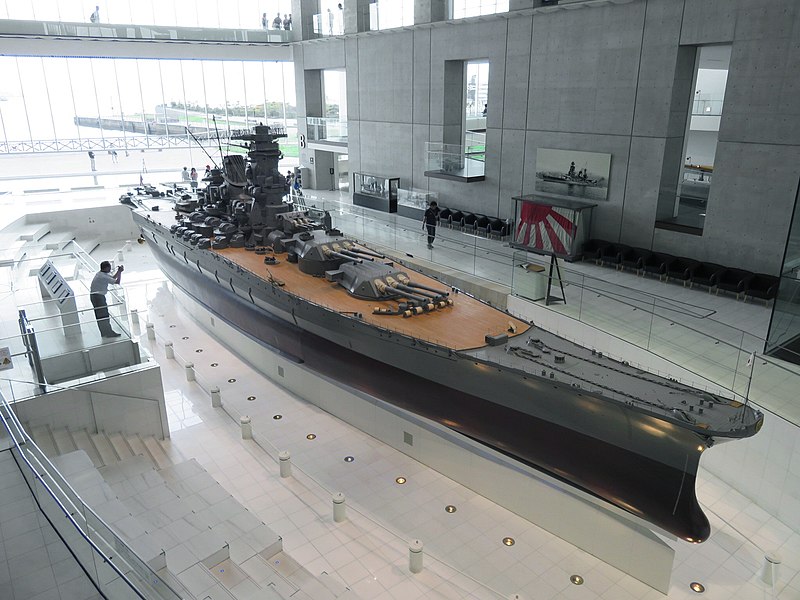
For more historic fails like this, you can read about “The Curse of the USS Porter” here! Also, be sure to check out the Epik Fails of History podcast, and you can find my books on Amazon and Audible!
– Erik Slader
Sources:
https://www.pbs.org/wgbh/nova/supership/
https://www.history.com/news/why-did-japan-attack-pearl-harbor
https://en.wikipedia.org/wiki/Isoroku_Yamamoto
https://en.wikipedia.org/wiki/Battle_of_Midway
https://en.wikipedia.org/wiki/Japanese_battleship_Yamato



